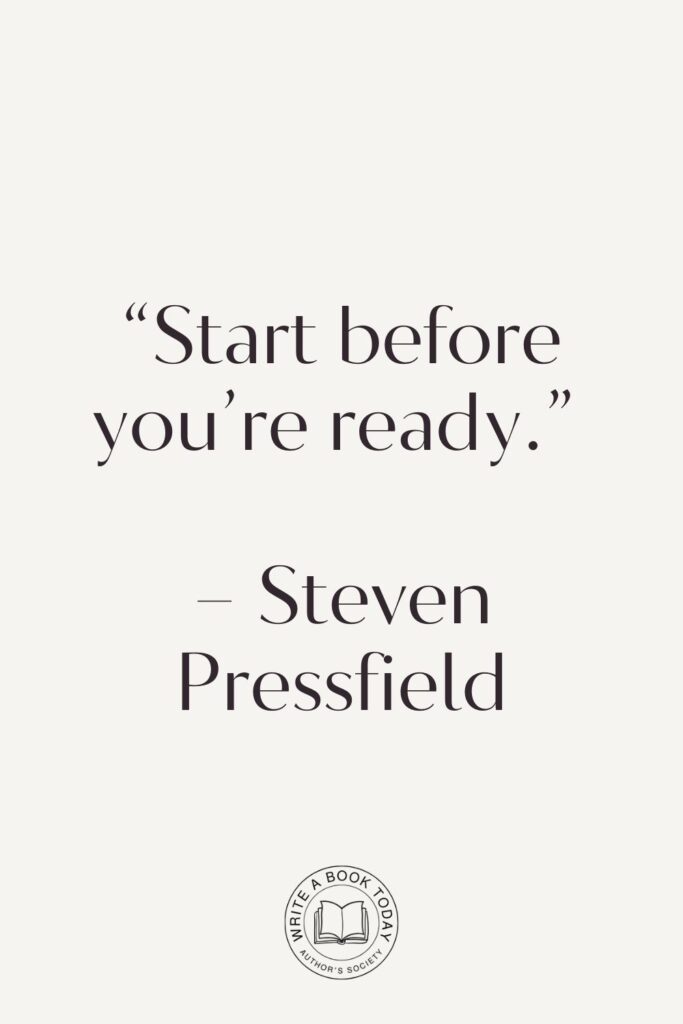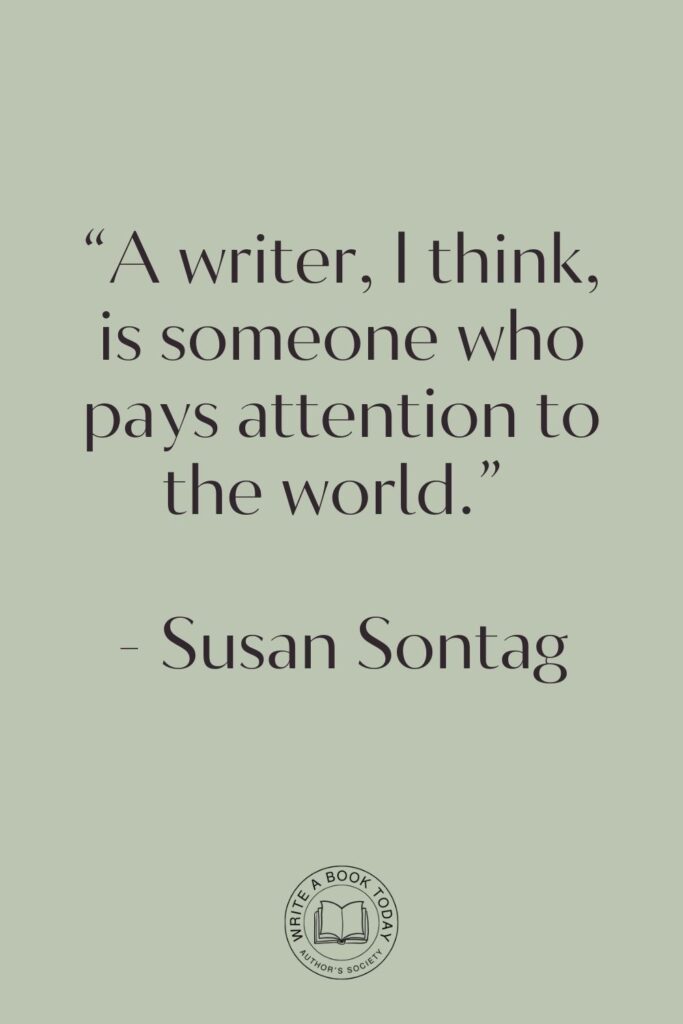Have you ever found yourself staring at a blank page, the cursor blinking back at you like a silent metronome, marking the passage of time as your thoughts scatter like leaves in the wind? Crafting a sustainable writing routine can feel like chasing shadows, elusive and fleeting.
Yet, with the right approach, it can become your steadfast companion, guiding you through the labyrinth of words with grace and ease.
This guide aims to unravel the mystery of building such a routine, offering insights and practical strategies that cater to writers of all walks. From understanding the essence of time management to overcoming common hurdles, we will explore the art of writing sustainably, ensuring your creative well never runs dry.
Understanding the Sustainable Writing Routine
At the heart of any writer’s journey lies the pursuit of consistency—a rhythm that transforms chaotic creativity into a harmonious symphony. But what exactly is a sustainable writing routine? Imagine it as a well-tended garden, where each plant represents a different facet of your writing life.
This routine isn’t about rigid schedules or unattainable goals; it’s about nurturing your craft in a way that aligns with your personal rhythm and lifestyle. It’s about finding a balance that allows your creativity to flourish without the burnout that often accompanies creative endeavors.
Defining a Sustainable Writing Routine
A sustainable writing routine is a custom-fit strategy that enables you to write regularly while maintaining your mental and emotional well-being. It’s like tailoring a suit—one size does not fit all.
This routine is designed to fit your unique needs, accommodating your peak productivity times and personal commitments.
It requires introspection, understanding when you’re most inspired, and when you need to step back and recharge. This balance ensures that writing becomes a joy, not a chore, allowing your passion to shine through every word.
To define your sustainable writing routine, start by tracking your daily activities for a week. Note the times when you feel most energetic and creative. Use this data to allocate specific writing slots during your peak hours, ensuring that your routine is both productive and enjoyable.
The Importance of Time Management for Writers
Time management is the cornerstone of a sustainable writing routine. For writers, time is both a friend and a foe. It can either be the gentle current that carries your ideas to fruition or the relentless tide that sweeps them away.
Effective time management transforms your writing process from a sporadic activity into a disciplined practice. By allocating specific time blocks for writing, research, and editing, you can make the most of each moment, turning minutes into masterpieces. It’s about making time your ally, not your adversary.
Identifying Common Writing Challenges
Writing is a journey fraught with challenges, much like a ship navigating through stormy seas. These challenges can stall progress and dampen enthusiasm, but recognizing them is the first step toward overcoming them. Let’s delve into some of the most common obstacles writers face and explore strategies to conquer them.

Procrastination: The Writer’s Nemesis
Procrastination is the stealthy thief that robs writers of their most precious resource—time. It whispers sweet promises of later, tomorrow, and someday, only to leave you grappling with the guilt of missed opportunities.
To combat procrastination, one must understand its roots, often entangled with fear of failure or perfectionism. Breaking tasks into smaller, manageable chunks can mitigate its grip, transforming daunting projects into achievable milestones.
- Set specific deadlines for each task.
- Use timers to create a sense of urgency.
- Reward yourself for completing tasks on time.
If you find yourself procrastinating, try the two-minute rule. If a task takes less than two minutes to complete, do it immediately. This approach can help you overcome the inertia of starting, making it easier to tackle larger tasks.
Google Docs is for notes. Scrivener is for novels. Upgrade your writing game and try it for free today!

Overcoming Self-Doubt in Writing
Self-doubt is a shadow that lurks in the corners of every writer’s mind, whispering tales of inadequacy and insecurity. It can stifle creativity, leaving you paralyzed with indecision. To overcome self-doubt, embrace the notion that imperfection is part of the creative process.
Allow yourself the freedom to write poorly, knowing that refinement comes with revision. Surround yourself with supportive peers who understand your struggles and offer constructive feedback, helping you see your work through fresh eyes.
Remember, every great writer has faced moments of doubt. It is the persistence to push through these moments that leads to growth and mastery. Cultivate a mindset that celebrates progress, no matter how small, and recognizes that every piece of writing is a stepping stone on your journey.
Building Effective Writing Habits
Habits are the building blocks of a sustainable writing routine. They are the quiet rituals that shape our days, transforming intention into action. Developing effective writing habits can elevate your craft, turning sporadic inspiration into a reliable source of creativity.
Creating a Daily Writing Schedule
Creating a daily writing schedule is akin to planting seeds in fertile soil, nurturing them with the sunlight of consistency. A schedule provides structure, helping you prioritize writing amidst life’s myriad demands.
Begin by identifying your most productive times and dedicating them to writing. Whether it’s early morning or late at night, find your golden hour and guard it fiercely. Consistency is key; even short, focused sessions can yield significant results over time.
Integrate your writing schedule into your daily routine, much like brushing your teeth or having a cup of coffee. Make it a non-negotiable part of your day, creating a habit that becomes second nature.
Over time, your mind will associate these moments with creativity, making it easier to slip into the flow of writing.
Setting Achievable Goals and Milestones
Goals are the compass that guides your writing journey, offering direction and purpose. However, setting unrealistic goals can lead to frustration and burnout. Instead, focus on creating achievable milestones that inspire progress.
Break down large projects into smaller, manageable tasks, celebrating each victory along the way. This approach not only boosts motivation but also provides a sense of accomplishment that fuels further creativity.
When setting writing goals, use the SMART criteria: Specific, Measurable, Achievable, Relevant, and Time-bound. This framework ensures that your goals are clear and attainable, increasing your chances of success.
Incorporating Breaks and Downtime
In the symphony of writing, rest notes are as crucial as the notes themselves. Incorporating breaks and downtime into your routine prevents burnout, allowing your mind to recharge and your creativity to flourish.
Think of breaks as the pause between musical movements, offering a moment to reflect and refresh. Short breaks can boost productivity, while longer periods of rest can rejuvenate your spirit, sparking new ideas and perspectives.
Consider adopting techniques such as the Pomodoro Technique, which alternates focused work sessions with short breaks, enhancing concentration and efficiency. Remember, rest is not a luxury but a necessity, ensuring your writing remains vibrant and inspired.

Tools and Techniques for Time Management
In the digital age, writers have access to a plethora of tools and techniques designed to enhance productivity and streamline the writing process. Embracing these resources can transform your time management for writers, allowing you to focus more on creativity and less on logistics.
Using Digital Tools to Enhance Productivity
Digital tools are the modern writer’s toolbox, offering solutions for everything from organization to inspiration. Apps like Scrivener and Evernote help organize ideas and drafts, while tools like Grammarly ensure your prose is polished and professional.
Time management apps, such as Trello and Asana, enable you to track progress and deadlines, keeping your projects on course. By leveraging these resources, you can streamline your workflow, making room for creativity to thrive.
| Tool | Purpose |
|---|---|
| Scrivener | Organization and drafting |
| Evernote | Note-taking and idea management |
| Grammarly | Grammar and style checking |
| Trello | Project management and scheduling |
The Pomodoro Technique: A Game Changer for Writers
The Pomodoro Technique is a simple yet powerful method that can revolutionize your writing routine. It involves working in focused bursts of 25 minutes, followed by a five-minute break.
This cycle helps maintain concentration and prevent fatigue, making it ideal for writers who struggle with prolonged focus. By breaking tasks into manageable intervals, the Pomodoro Technique transforms writing into a series of achievable sprints, rather than a daunting marathon.
Many writers find that this technique not only increases productivity but also enhances creativity, as the regular breaks provide an opportunity for the mind to wander and explore new ideas.
Experiment with different time intervals to find what works best for you, and watch as your writing routine becomes more efficient and enjoyable.
Feeling lost with your debut novel?
Fiverr Pro connects you with expert editors, designers, and marketers – everything you need to get your book ready for success!

Finding Your Ideal Writing Environment
Your writing environment plays a crucial role in shaping your creativity and productivity. It’s the canvas upon which your thoughts are painted, influencing the colors and textures of your prose. Creating a space that fosters focus and inspiration is essential for maintaining a sustainable writing routine.
Creating a Distraction-Free Zone
In a world brimming with distractions, creating a sanctuary for writing is paramount. This space should be free from interruptions, allowing you to immerse yourself fully in the creative process.
Consider designating a specific area for writing, equipped with all the tools you need. Silence notifications, close unnecessary tabs, and let your mind sink into the depths of your work, undisturbed by the outside world.
Establish boundaries with those around you, communicating the importance of uninterrupted time. This not only respects your creative process but also reinforces the significance of your writing routine, making it a priority in your life.

Personalizing Your Writing Space
Your writing space should be a reflection of your personality and creativity, a place where inspiration flows freely. Personalize it with items that spark joy and motivation, whether it’s a favorite quote, a cherished photograph, or a vibrant plant.
This environment should evoke a sense of comfort and creativity, encouraging you to explore the depths of your imagination.
Experiment with different layouts, lighting, and decor until you find the perfect combination that fuels your creativity. Remember, your writing space is an extension of your mind, and cultivating an environment that nurtures your spirit is essential for a thriving writing routine.
Real-Life Success Stories: Writers Who Found Their Groove
Every writer’s journey is unique, a tapestry woven with trials and triumphs. Learning from the experiences of others can provide valuable insights and inspiration, illuminating the path toward a sustainable writing routine.
Lessons Learned from Established Authors
Established authors often share their journeys, offering a glimpse into the habits and routines that have led to their success. From Stephen King’s disciplined writing schedule to J.K. Rowling’s perseverance through rejection, these stories remind us that every writer faces challenges.
The key lies in persistence and the willingness to adapt. By studying the routines of successful authors, we can glean insights into the practices that foster creativity and productivity.
When reading about successful authors, focus on the strategies they use to overcome challenges. Adapt these strategies to fit your own writing routine, creating a personalized approach that draws inspiration from their successes.
Inspiring Anecdotes from Fellow Writers
Beyond the literary giants, countless writers navigate the same challenges and triumphs, each with their own story to tell. These anecdotes offer a sense of camaraderie, reminding us that we are not alone in our struggles.
Whether it’s a fellow writer who found solace in early morning writing sessions or someone who overcame self-doubt through community support, these stories inspire us to persevere and find our own groove.
Engaging with writing communities, whether online or in-person, provides a platform for sharing experiences and learning from one another. These connections offer support, encouragement, and fresh perspectives, enriching your writing journey.
Take Action: Your Path to a Sustainable Writing Routine
As we reach the culmination of this guide, it’s time to take the insights and strategies shared and apply them to your own writing journey. Building a sustainable writing routine is a personal endeavor, one that requires reflection, experimentation, and commitment.

Reflecting on Your Current Writing Practices
Begin by reflecting on your current writing practices, identifying areas that align with your goals and those that require adjustment.
Consider the times when you feel most productive, the challenges you face, and the habits that support or hinder your progress. This introspection lays the foundation for a writing routine that is both effective and enjoyable.
Journaling can be a helpful tool during this process, allowing you to track your thoughts and observations over time. This record serves as a valuable resource, guiding you as you refine your routine and adapt to changing circumstances.
No marketing platform? No social following? No problem!
Publisher Rocket helps you market your debut novel like a pro.
It’s a gamechanger for debut authors – try it today!


Implementing Changes One Step at a Time
Change is a gradual process, best approached one step at a time. Start by implementing small adjustments to your routine, focusing on one aspect at a time.
Whether it’s dedicating a specific time for writing or experimenting with new tools, these incremental changes build momentum, leading to significant improvements over time.
Celebrate each milestone, no matter how small, as a testament to your commitment and progress. This positive reinforcement encourages continued growth, transforming your writing routine into a source of joy and fulfillment.
Join the Conversation: Share Your Journey
Writing is a solitary endeavor, yet it thrives in community. Join the conversation by sharing your journey with fellow writers, exchanging insights, challenges, and triumphs. This sense of connection fosters a supportive environment, where each writer’s success is celebrated and encouraged.
Engage with writing groups, forums, or social media communities to expand your network and gain new perspectives. By sharing your experiences and learning from others, you contribute to a vibrant community that inspires and uplifts all who partake in the art of writing.








